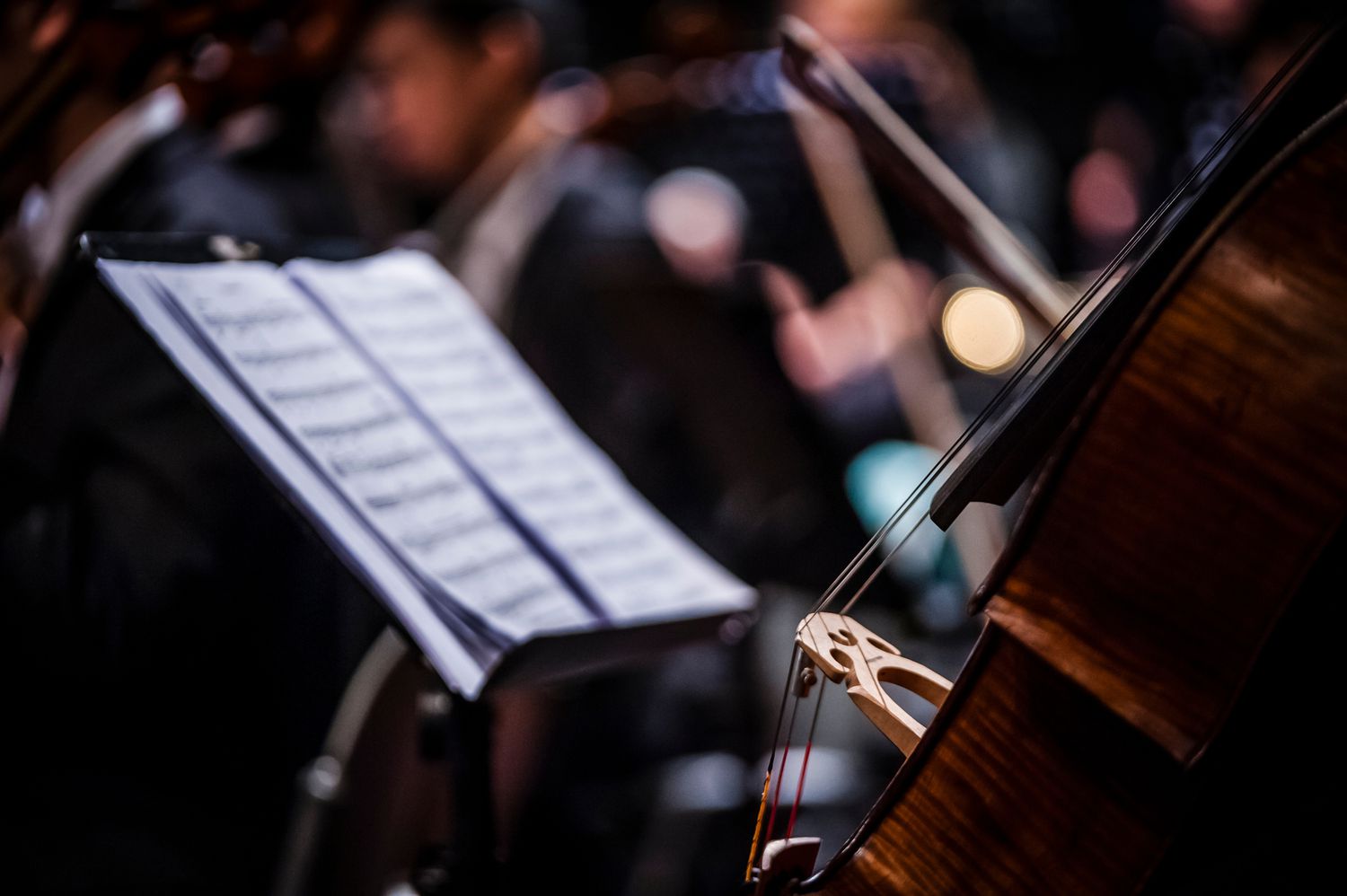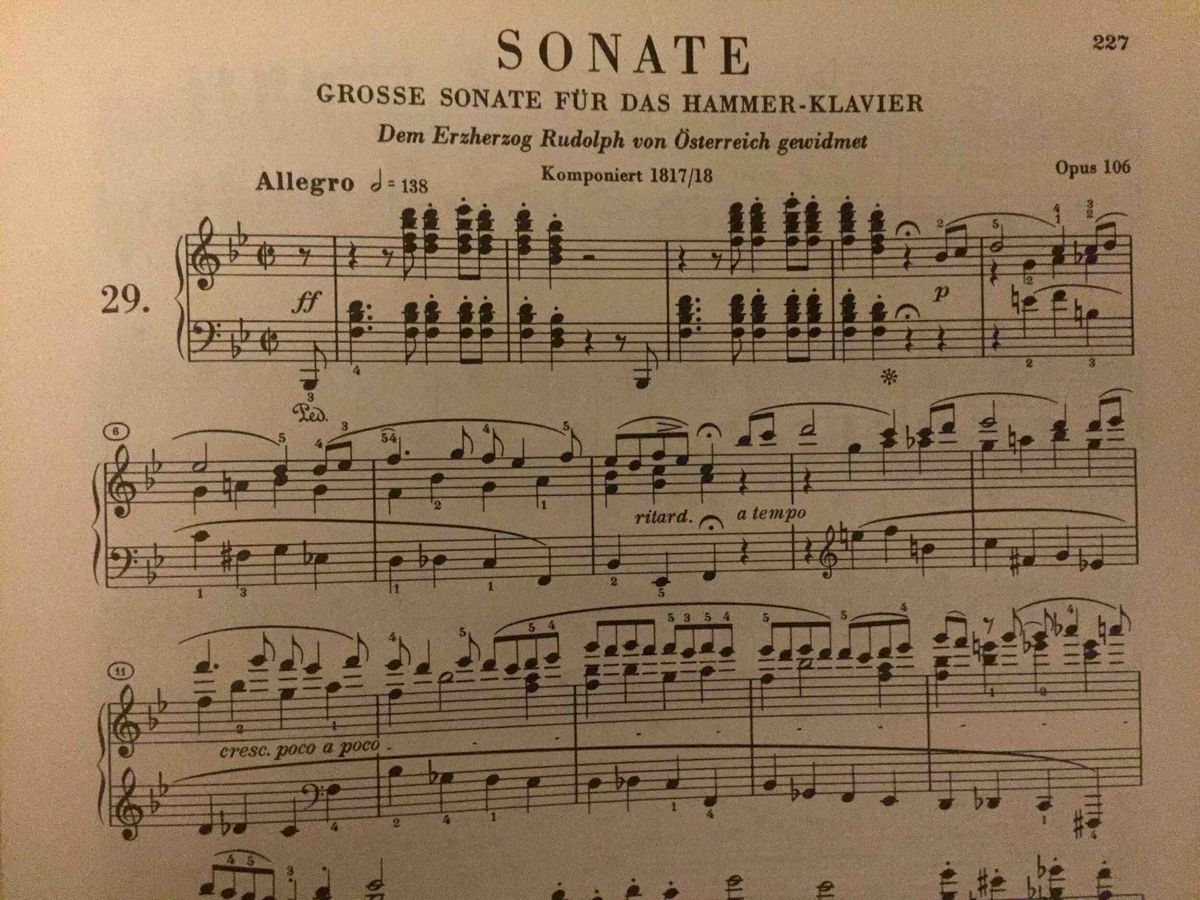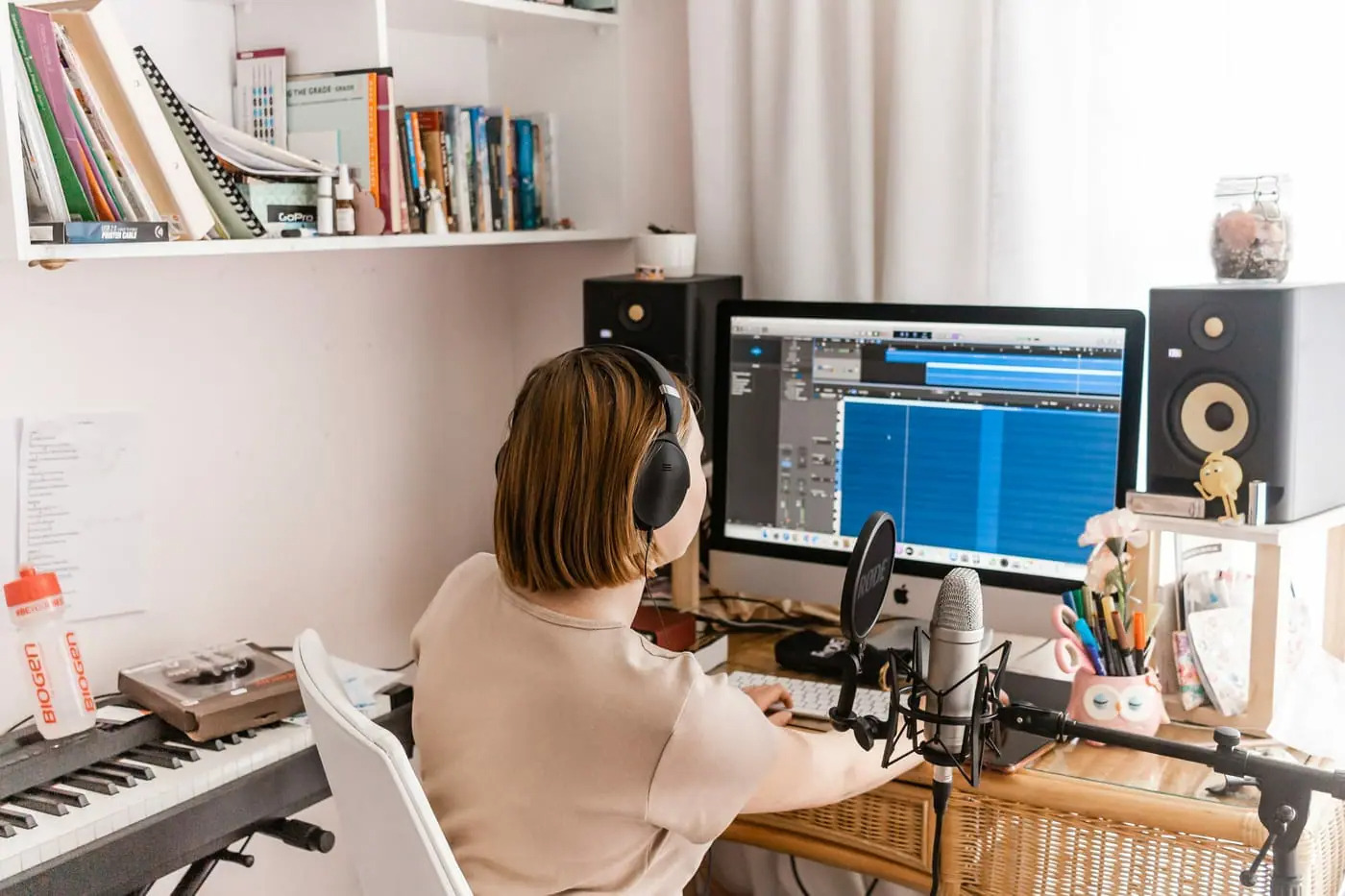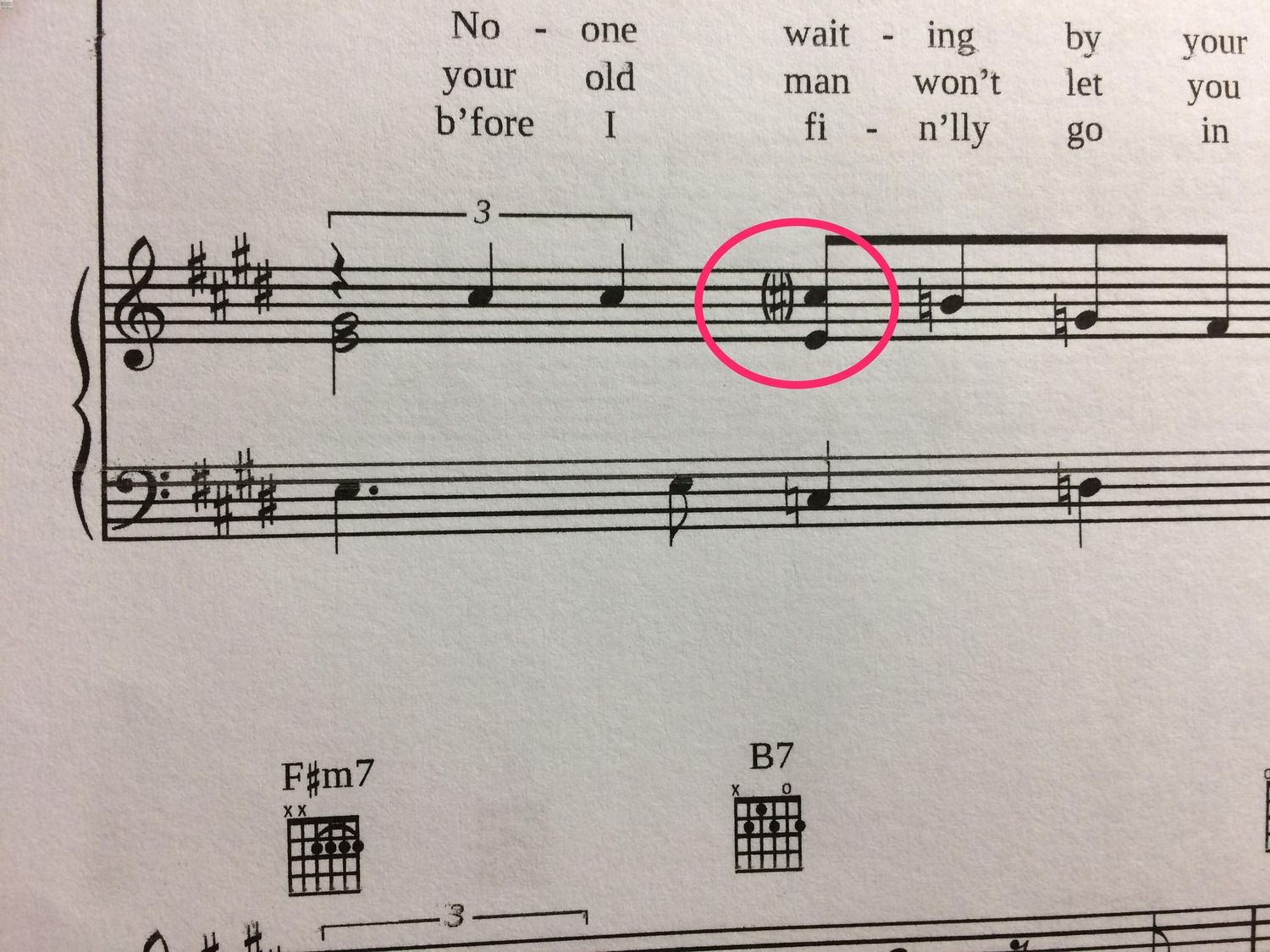Home>Production & Technology>Tempo>What Does Tempo Di Minuetto Mean In Music


Tempo
What Does Tempo Di Minuetto Mean In Music
Modified: January 22, 2024
Discover the meaning of Tempo Di Minuetto in music and how it affects the rhythm and style of a piece. Explore its significance and usage in this informative guide.
(Many of the links in this article redirect to a specific reviewed product. Your purchase of these products through affiliate links helps to generate commission for AudioLover.com, at no extra cost. Learn more)
Table of Contents
Introduction
Music is an art form that transcends boundaries and expresses a wide range of emotions. One essential element of music is tempo, which refers to the speed or pace at which a piece is played. In this article, we delve into the world of tempo and explore the meaning and significance of the term “Tempo di Minuetto” in music.
Tempo di Minuetto, which translates to “the tempo of a minuet,” is a term commonly found in classical music compositions. Minuet, originally a slow and stately dance, evolved into a popular musical form during the 17th and 18th centuries. Composers such as Johann Sebastian Bach, Wolfgang Amadeus Mozart, and Ludwig van Beethoven incorporated minuets into their compositions, often giving specific tempo indications, including Tempo di Minuetto.
In simple terms, Tempo di Minuetto indicates the tempo at which a piece should be played, imitating the style and pace of a minuet. It evokes a graceful and elegant character, summoning imagery of a ballroom and dancers twirling to the music.
The use of Tempo di Minuetto adds a distinctive charm to a piece of music, creating a sense of nostalgia and refinement. It requires performers to adhere to a specific tempo, allowing the melodies and harmonies to unfold with precision and grace. The tempo is typically moderate, neither too fast nor too slow, providing a balanced and controlled rhythm.
In the following sections, we delve deeper into the etymology and historical background of Tempo di Minuetto, explore its characteristics, and discuss considerations for interpreting and performing pieces in this tempo. We will also examine examples of Tempo di Minuetto in iconic classical compositions, providing a glimpse into the richness and versatility of this musical style.
Join us on this musical journey as we unravel the enchanting world of Tempo di Minuetto and discover how it has shaped the landscape of classical music.
Definition of Tempo Di Minuetto
Tempo Di Minuetto is a musical term used to indicate a specific tempo, or speed, in a piece of music that is meant to resemble the style and pace of a minuet. The term “tempo” refers to the speed or pace at which a musical composition is performed, and the “minuet” is a dance form that originated in the 17th century and gained popularity during the Baroque and Classical periods.
Minuets were typically performed at a moderate tempo, with grace and elegance. By incorporating the term Tempo Di Minuetto into a composition, composers aimed to convey a similar sense of poise and refinement. This tempo indication suggests that the performer should play the piece in a manner reminiscent of a minuet, with a moderate and measured pace.
While the exact speed of a Tempo Di Minuetto can vary slightly depending on the composer and the specific piece of music, it generally falls within a range of 72 to 84 beats per minute. This moderate tempo allows for the distinct melodic and rhythmic characteristics of a minuet to be expressed effectively.
Tempo Di Minuetto is often indicated at the beginning of a piece or at specific sections within it, serving as a guide for both the performer and the listener. It provides a framework for maintaining the appropriate pace and stylistic interpretation throughout the composition.
It is important to note that Tempo Di Minuetto is not a fixed tempo, but rather a suggested tempo that allows for artistic interpretation. Different performances of the same composition can vary in their exact tempo, as long as they maintain the overall character and style of a minuet.
The tempo marking of Tempo Di Minuetto calls for a balanced and controlled rhythm, with each note and phrase carefully executed to capture the grace and elegance associated with the dance. It requires precision and attention to detail to bring out the subtleties of the composition and infuse it with the desired musical expression.
Tempo Di Minuetto remains a vital component of classical music compositions, maintaining the tradition and legacy of the minuet dance form. Its melodic and rhythmic qualities continue to captivate audiences and transport them to an era of elegance and sophistication.
Historical Background
The origins of the minuet dance can be traced back to the late 17th century in the courts of Europe, particularly in France. It quickly gained popularity and became a staple of social gatherings and balls during the Baroque and Classical periods.
Originally, the minuet was characterized by its stately, refined, and graceful movements. It was typically performed in triple meter, with a moderate tempo and an AABB structure. The dance was accompanied by music composed specifically for this purpose, which eventually led to the development of the musical form known as the minuet.
During the Baroque period, composers such as Johann Sebastian Bach incorporated minuets into their suites and keyboard works, adapting them for solo instruments. However, it was in the Classical period that the minuet reached its peak in popularity. Composers like Ludwig van Beethoven, Wolfgang Amadeus Mozart, and Franz Joseph Haydn composed numerous minuets, often as a part of their larger symphonies, sonatas, or string quartets.
These composers not only utilized the minuet as a standalone dance but also integrated it into symphonic and chamber music compositions as a contrasting middle movement. The minuet became an essential component of the multi-movement structures of symphonies, marked by its elegant melodies, distinctive rhythms, and harmonic patterns.
The precise characteristics of the minuet dance evolved over time, with regional variations adding to its richness and diversity. The French minuet was characterized by its graceful, courtly movements, while the German and Austrian versions placed greater emphasis on the rhythmic aspects of the dance.
As the popularity of the minuet spread across Europe, composers began including specific tempo indications to guide performers’ interpretation. This led to the emergence of tempo markers like Tempo Di Minuetto, which indicated the desired tempo and style of performance.
Tempo Di Minuetto became particularly prevalent during the Classical period, as composers sought to capture the elegance and refined nature of the dance in their compositions. By incorporating this tempo indication, composers ensured that their intentions were preserved, allowing performers and listeners to experience the spirit of the minuet through the music.
Today, the minuet remains an integral part of classical music repertoire, and Tempo Di Minuetto continues to be marked in sheet music as a reminder of the historical significance and musical attributes of this dance form.
Characteristics of Tempo Di Minuetto
Tempo Di Minuetto possesses several distinctive characteristics that contribute to its unique musical expression. Composers and performers alike are tasked with capturing the essence of the minuet dance through these defining features. Let’s explore some of the key characteristics of Tempo Di Minuetto:
1. Moderate Tempo: One of the defining traits of Tempo Di Minuetto is its moderate speed. It falls within a range of 72 to 84 beats per minute, providing a comfortable and measured pace. This moderate tempo allows for the graceful movements of the minuet dance to be translated into the musical performance.
2. Balanced Rhythm: The rhythm of Tempo Di Minuetto is characterized by its balanced and controlled nature. Each note and phrase is executed with precision and clarity, maintaining a sense of poise and elegance throughout the composition. The rhythmic patterns often emphasize the triple meter, which is a hallmark of the minuet dance.
3. Graceful Melodies: Melodically, Tempo Di Minuetto features graceful and flowing melodies that evoke a sense of beauty and sophistication. These melodies are often characterized by their lyrical quality, with smooth and connected lines that allow every note to be clearly heard.
4. Elegant Harmonies: Harmonically, Tempo Di Minuetto explores the rich and expressive qualities inherent in the minuet dance. It often employs simple, yet elegant, harmonies that create a sense of stability and balance. These harmonies often result in beautiful and satisfying progressions that complement the melodic lines.
5. Delicate Articulation: The articulation in Tempo Di Minuetto is often delicate and precise. Notes are carefully separated or connected as required by the musical phrases, enhancing the gracefulness and clarity of the composition. The use of light staccato or legato articulations adds to the overall charm and elegance of the performance.
6. Dynamic Control: Tempo Di Minuetto requires performers to exercise careful dynamic control. While it may not exhibit drastic changes in dynamics, subtle contrasts and variations are employed to highlight the nuances and expressive elements of the piece. This controlled dynamic range adds depth and sensitivity to the performance.
7. Balanced Phrasing: Phrasing in Tempo Di Minuetto is structured and balanced, reflecting the elegant and symmetrical nature of the minuet dance. Musical phrases are often composed of two or four-bar motifs, with each phrase leading smoothly into the next. This balanced phrasing contributes to the overall sense of refinement and orderliness.
By embodying these characteristics, composers and performers can bring forth the distinct qualities of Tempo Di Minuetto, allowing the music to embody the grace and elegance associated with the minuet dance. The attention to detail and adherence to these characteristics are crucial in capturing the essence of this musical style.
Interpretation and Performance Considerations
Interpreting and performing music in Tempo Di Minuetto requires careful attention to detail and a deep understanding of the style and characteristics of the minuet dance. Here are some important considerations for performers:
1. Tempo Interpretation: While Tempo Di Minuetto provides a suggested tempo range, performers have some flexibility in interpreting the exact speed. It is essential to find a tempo that allows the music to flow naturally while capturing the grace and elegance associated with the minuet. Experimenting with different tempos can help find the perfect balance between maintaining a moderate pace and expressing the musicality of the composition.
2. Expressive Phrasing: Paying attention to the phrasing is crucial in capturing the refined and poised nature of Tempo Di Minuetto. Each phrase should have a clear beginning, middle, and end, with attention to dynamic shaping and subtle variations in articulation. Consider using subtle crescendos and decrescendos, as well as tasteful rubato when appropriate, to imbue the performance with expressiveness and emotional depth.
3. Graceful Articulation: The articulation in Tempo Di Minuetto plays an essential role in conveying the elegance of the dance. Performers should strive for smooth and connected lines, connecting the notes subtly while still allowing the melodic contour to shine through. Careful attention should be given to legato and staccato markings, giving emphasis to the graceful nature of the music.
4. Dynamic Nuances: While the dynamics in Tempo Di Minuetto may not fluctuate dramatically, subtle dynamic nuances can greatly enhance the performance. Consider adding gentle swells and fades to phrases, highlighting specific musical moments or creating contrast between different sections of the composition. These nuanced dynamic markings contribute to the overall musicality and expression of the piece.
5. Balance and Texture: Achieving a balanced and transparent texture is vital in the performance of Tempo Di Minuetto. Each voice or instrument should have its own distinct presence while still maintaining an overall sense of cohesion and unity. Pay attention to the balance between melody and accompaniment and ensure that each voice is clearly heard and well-balanced throughout the composition.
6. Understanding the Historical Context: Familiarize yourself with the background and historical context of the minuet dance and its relationship to classical music. Studying the works of composers who frequently employed Tempo Di Minuetto, such as Mozart and Beethoven, can provide valuable insights into their intended interpretation and style.
7. Capturing the Social Dance Spirit: Keep in mind that the minuet dance was often performed in social gatherings and ballrooms, and it carries a certain social grace and etiquette. Try to capture this spirit in your performance, imagining the dancers moving gracefully to the music. This mental image can help shape your interpretation and infuse the performance with the appropriate character and style.
By considering these interpretive and performance aspects, musicians can bring the beauty and elegance of Tempo Di Minuetto to life. Capturing the essence of this tempo indication requires a sensitive and thoughtful approach, allowing the music to transport audiences to a world of refined charm and sophistication.
Examples of Tempo Di Minuetto in Classical Music
Tempo Di Minuetto was a popular tempo indication used by many prominent classical composers, particularly during the Classical period. Here are a few notable examples of compositions that feature Tempo Di Minuetto:
1. Wolfgang Amadeus Mozart – Symphony No. 40 in G minor: In the third movement of this beloved symphony, Mozart includes Tempo Di Minuetto as the tempo marking. The minuet-like character of the movement is emphasized by the deliberate tempo and graceful melodies, showcasing Mozart’s mastery of this style.
2. Ludwig van Beethoven – Piano Sonata No. 17 in D minor “The Tempest”: Beethoven’s Tempo Di Minuetto in the second movement of this sonata demonstrates his ability to infuse the minuet style with his own distinctive voice. The moderate tempo and elegant phrasing create a sense of introspection and introspective beauty.
3. Franz Joseph Haydn – Symphony No. 92 in G major “Oxford”: The third movement of this symphony, also marked as Tempo Di Minuetto, showcases Haydn’s penchant for playful melodies and contrapuntal textures. It is a prime example of how Haydn incorporated the minuet style into his symphonic compositions.
4. Johann Sebastian Bach – Orchestral Suite No. 2 in B minor: In the second movement of this suite, Bach utilizes the minuet style with his characteristic contrapuntal writing. While he does not explicitly mark it as Tempo Di Minuetto, the movement exhibits all the characteristics associated with this tempo indication.
5. Jean-Baptiste Lully – Le Bourgeois Gentilhomme: Lully, a French composer known for his contributions to the development of the French court ballet, often composed with the minuet dance in mind. His work, Le Bourgeois Gentilhomme, includes several movements marked as Tempo Di Minuetto, showcasing the inherent elegance and gracefulness of the genre.
These examples represent just a fraction of the extensive repertoire that incorporates Tempo Di Minuetto. Composers of the classical era frequently utilized this tempo marking, demonstrating their appreciation for the refined charm of the minuet dance and its musical expression.
Exploring these compositions allows us to appreciate the depth and variety of interpretations that can arise from Tempo Di Minuetto. Each piece showcases the composer’s individual approach to the tempo indication, resulting in a rich tapestry of musical expression and artistry.
Whether it is Mozart’s symphonies, Beethoven’s sonatas, Haydn’s symphonic works, or Bach’s suites, Tempo Di Minuetto provides a window into the elegance and sophistication of classical music, highlighting the enduring influence of the minuet dance on the development of Western music.
Conclusion
Tempo Di Minuetto holds a significant place in the realm of classical music, bridging the gap between the dancing world and musical expression. It captures the grace, elegance, and refined character of the minuet dance, allowing composers and performers to recreate its spirit through their compositions and interpretations.
Through our exploration of the definition, historical background, characteristics, interpretation, and examples of Tempo Di Minuetto, we have gained a deeper understanding of its importance and impact. This tempo marking invites us to step into a world of sophistication, where melodies glide effortlessly and rhythms captivate with their controlled grace.
Tempo Di Minuetto offers performers a framework for capturing the essence of the minuet, demanding attention to nuances, articulation, phrasing, and dynamics, while presenting opportunities for individual expression. It invites us to reflect on the rich heritage of classical music and connect with the traditions and styles of past eras.
By studying compositions marked with Tempo Di Minuetto, such as those by Mozart, Beethoven, Haydn, and Bach, we can marvel at the versatility and creativity of these musical masters. Their ability to infuse the tempo indication with their unique musical voices showcases the depth and breadth of the minuet style.
As we listen to or perform pieces in Tempo Di Minuetto, we are transported to an era of grand ballrooms and sophisticated social gatherings. The refined melodies, balanced rhythms, elegant harmonies, and delicate articulation engage our senses and evoke a sense of nostalgia and beauty.
Tempo Di Minuetto reminds us of the enduring appeal of classical music, its ability to transcend time and touch our emotions. It showcases the craftsmanship and artistry of composers who expertly wove the spirit of the minuet into their musical creations, leaving a lasting impact on the musical landscape.
In conclusion, Tempo Di Minuetto serves as a testament to the profound connection between music and dance. Its presence in classical compositions allows us to experience the charm and grace of the minuet, providing a window into a bygone era. By understanding and appreciating Tempo Di Minuetto, we can fully immerse ourselves in the beauty and elegance of this timeless musical style.











